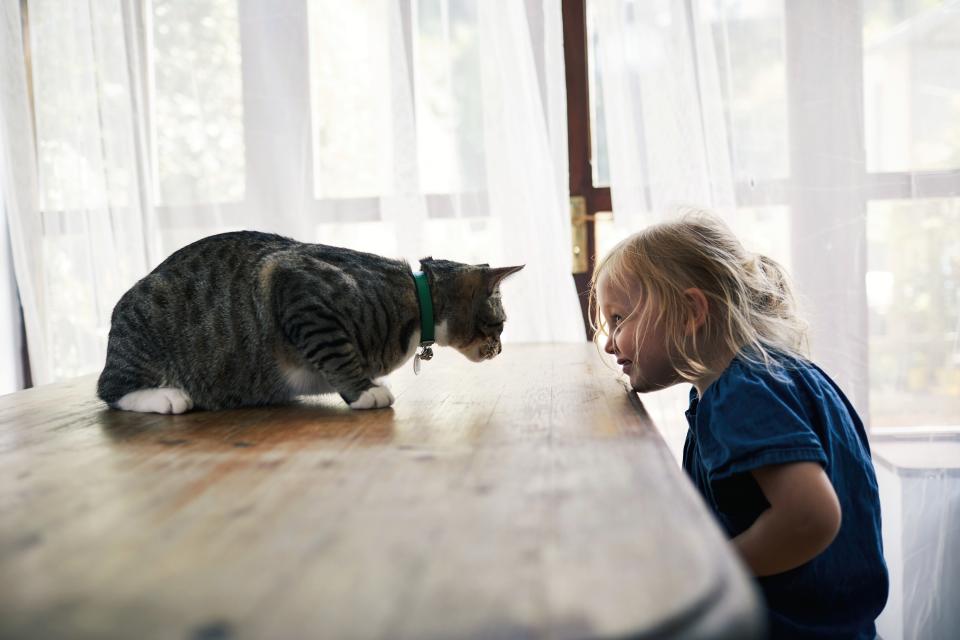The common mistakes parents make while raising kids around pets
The company of a furry friend can bring a bundle of joy to a family household especially if you’re bringing up kids alongside them.
However, apart from all the cuteness and entertainment that comes with watching your little ones interact with pets, it is absolutely crucial that parents keep a watchful eye for their children’s safety around animals.
And while this might sound like common sense, it turns out many of us are actually making some pretty simple mistakes according to veterinarian Dr Cherlene Lee who is a proud mum herself and owner of Sydney’s My Vet Animal Hospital.

So here’s where many of us are going wrong:
Believing your pet is different
It’s not uncommon to hear horror stories of young children being ‘attacked’ or bitten by dogs, but usually, you’re left thinking, ‘My dog would never do anything like that’ and that is mistake number one.
“A lot of parents think that because it’s their own dog they will be familiar with their behaviour and happy to leave their kid unsupervised, you see a lot of that especially with smaller dogs,” Charlene tells Yahoo Lifestyle stressing the importance of making sure your kid is always supervised around any dog whether it be your own or even a friends.
Forgetting that pets have a tipping point
“Even the best-behaved pet will have a tipping point,” and often the behaviour of little kids can play an impact on how quickly your pet reaches this point and potentially snaps back.
It could be as simple as your child accidentally pulling a tail or tripping over your pet which can cause them to snap so it’s important to remember this point and look for signs when they might be reaching it – which leads us to the next point.

Failure to read an animals body language
It’s easy to get distracted by how cute a child looks hugging an animal that we may miss the signs that the animal is actually quite uncomfortable.
In fact, according to Cherlene, “A lot of parents out there fail to correctly read an animals body language including how and when to approach them.”
In the case of dogs, if you see them licking their lips a lot, or notice their ears are pulled back and eyes wide that is a clear sign they are really stressed out and anxious about something. In these scenarios, it’s best not to approach them but to give them space until they calm down.
You can get some more advice on how to read a dog’s body language here.
Not setting boundaries
If you’re expecting a baby, learn to set boundaries for your pet BOTH before and after the baby comes.
For instance, Dr Cherlene recommends creating a safe place where your dog or cat isn’t allowed to enter such as the room you’ll nurse your baby – and try to start enforcing this before your little one arrives.
“Try to teach the dog basic commands like reverse, back up or stay, so you can have your own space with the baby when needed.”
Similarly, it’s suggested to give your pet their own safe space where they can go and have time out without being bothered by kids.

Lack of education for kids
“I think the most important thing to teach kids is that pets have feelings too and they show it through body language,” Cherlene tells Yahoo Lifestyle.
“So parents really need to teach children how to read a dogs body language but also about respecting the pets space.”
Dr Cherlene as she is currently working on running a Dog Bite Prevention program at schools in order to will educate primary children on how to interact with dogs appropriately.

Got a story tip? Send it to tips@oath.com
Want more lifestyle and celebrity news? Follow Yahoo Lifestyle on Facebook, Twitter and Instagram.

 Yahoo Lifestyle
Yahoo Lifestyle 



